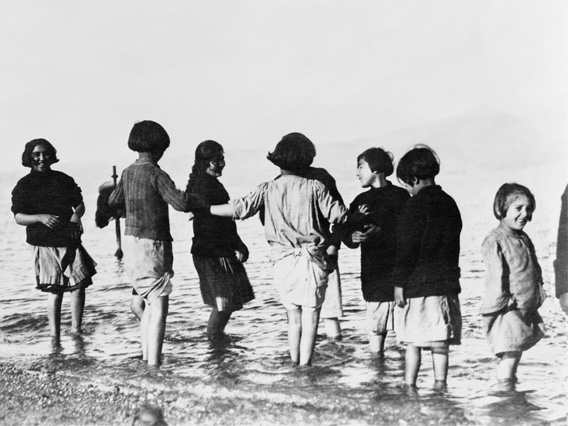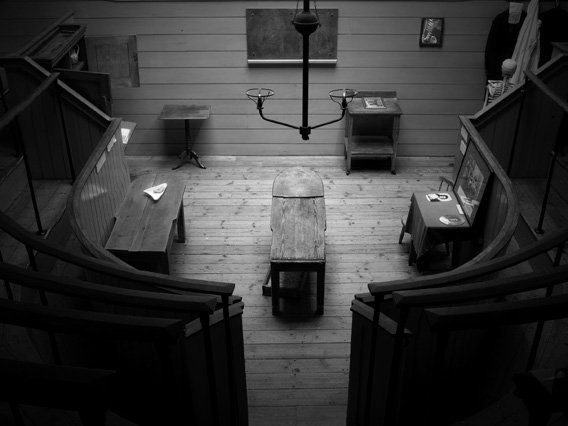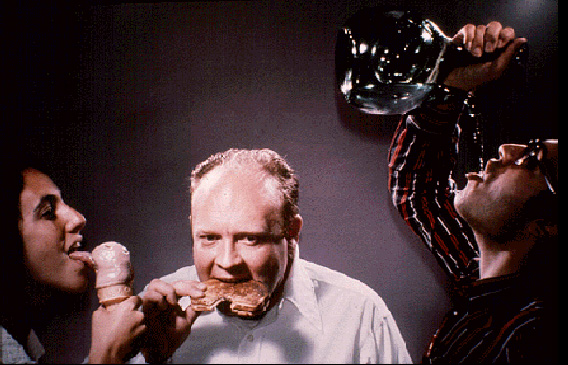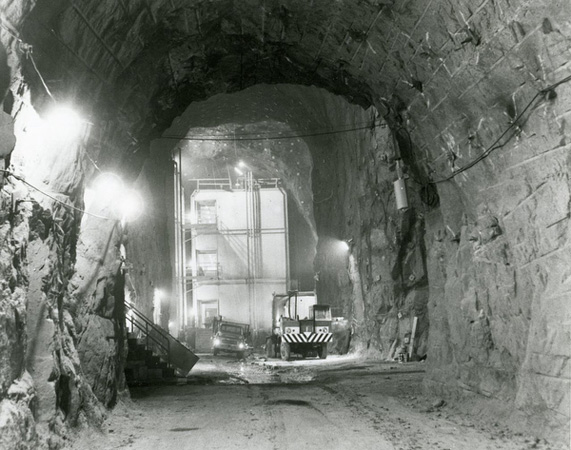Do Aliens Need Photo Captions? Werner Herzog Thinks So.
How does one decide what images represent humanity, and the earth itself, to date? If you had to get it down to 100 images, would you include this one?

Or this one?

The images above and in this gallery were selected by geographer-artist-extraordinaire Trevor Paglen and his team to be sent into space in the form of a silicon disc encased in a gold-plated shell. The project, which was commissioned by the organization Creative Time, is based on the idea that in billions of years when humanity is long gone, someone (something?) may be curious about what once existed here. These images, which are hitching a ride into space along with communications satellite EchoStar XVI, propose to fill in some of those blanks. Without captions.
This detail in particular clearly irritated German filmmaker Werner Herzog, who appeared on a panel Wednesday to discuss the project and its companion book, both titled The Last Pictures. Taking the stage alongside Paglen in New York’s Bryant Park, Herzog asked, “How do you tell them about the background of the photo?”
He objected in particular to a photo of a smiling child at a Japanese-American internment camp—one of many photos Herzog called a “cheap shot at the aliens.” Why would you want to suggest the internment camp was a happy place? How are the aliens supposed to know any better? What gives images their meaning is context, Herzog insisted.
Paglen said that it was precisely the contradiction created by the smile that made the photograph such a powerful image. What’s more, captions were irrelevant, he argued, because images don’t have fixed meanings.
All parties agreed it is highly unlikely that future aliens will ever find the photos. This project, which involved dozens of scientists, artists, philosophers and historians, is more a carefully executed thought experiment than an attempt at communication.
“In one sense it’s a deeply ridiculous project,” Paglen ceded. “Having said that, I thought it was a deeply ethical project.”
Herzog, persuasively skeptical from the beginning, startled the audience halfway through by stating that The Last Pictures is “one of the most amazing, beautiful photo books I’ve ever seen.” Then returning to the role of contrarian, he pointed out the fundamental problem with the entire project, one that seemed obvious to me and my colleague Lowen Liu from the get-go: Aliens don’t have eyes.
Putting that matter aside, this is not a new debate—nor is it the first time a postcard from earth has been sent to space. Back in the 1970s, scientists sent the Golden Record, a mix of images and sound, toward a faraway star. Whereas this latest collection attempts to hit on the complexities of “progress” and the cruel as well as beautiful parts of humanity, that original postcard was more happy-go-lucky—a “Hallmark card of earth,” as Paglen called it.
Astronomers at Cornell, who gathered the images, wanted to show exactly what humans were made of and could do, including eating, licking, and drinking. Because they could not find an image that adequately depicted those activities, they made one themselves:

This image, which went to space with the Voyager in 1977, provoked widespread laughter from the audience on Wednesday. Three scientists posing this way for the benefit of imagined aliens seems patently absurd. Nonetheless, Paglen has selected it as one of his 100 images, and it will be making its way into outer space for a second time. This new layer of self-aware humor will presumably be lost on the aliens who find the image, though. After all, there will be no caption.
Related Slideshow: See a Selection of the 100 Last Pictures

